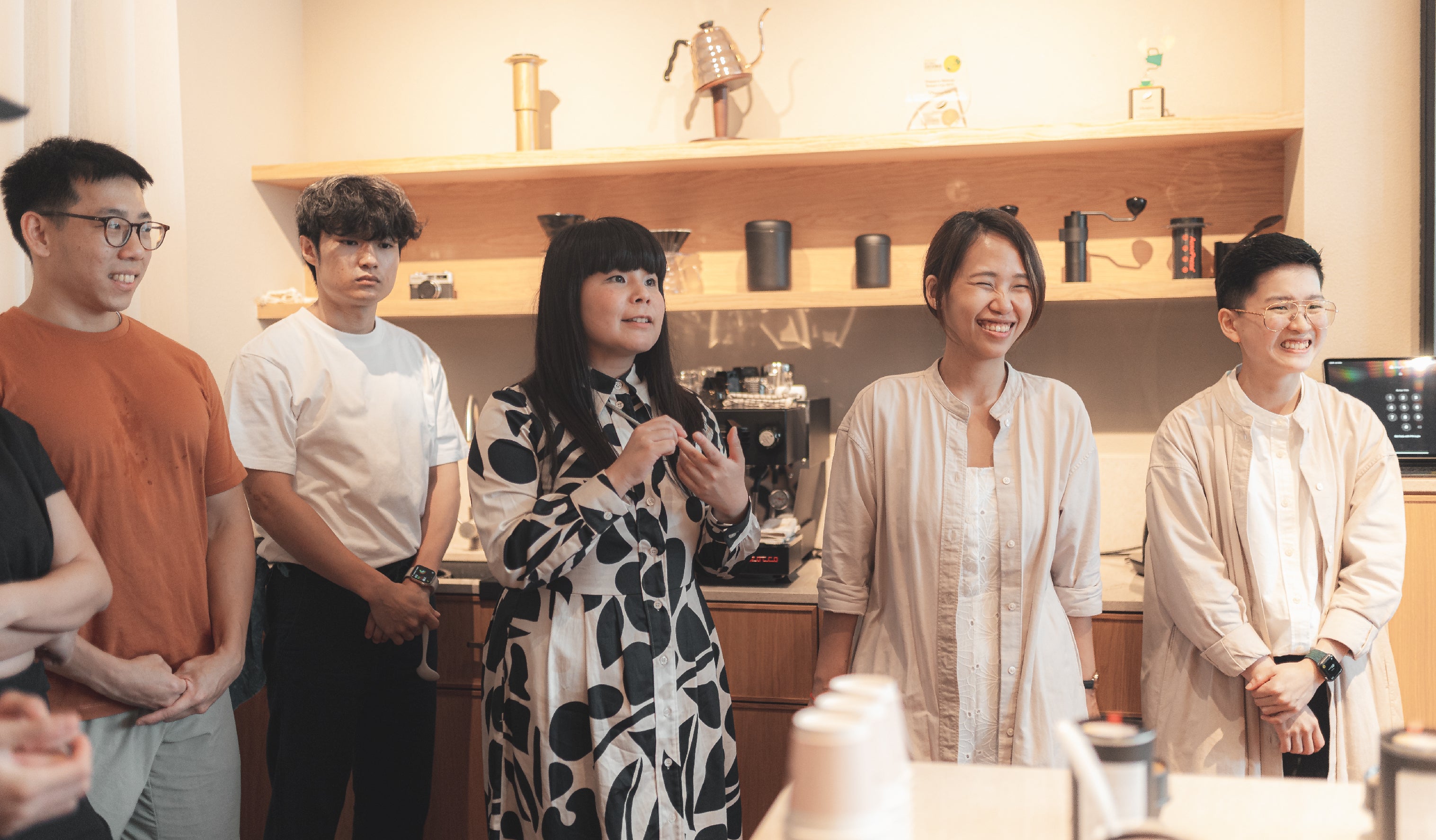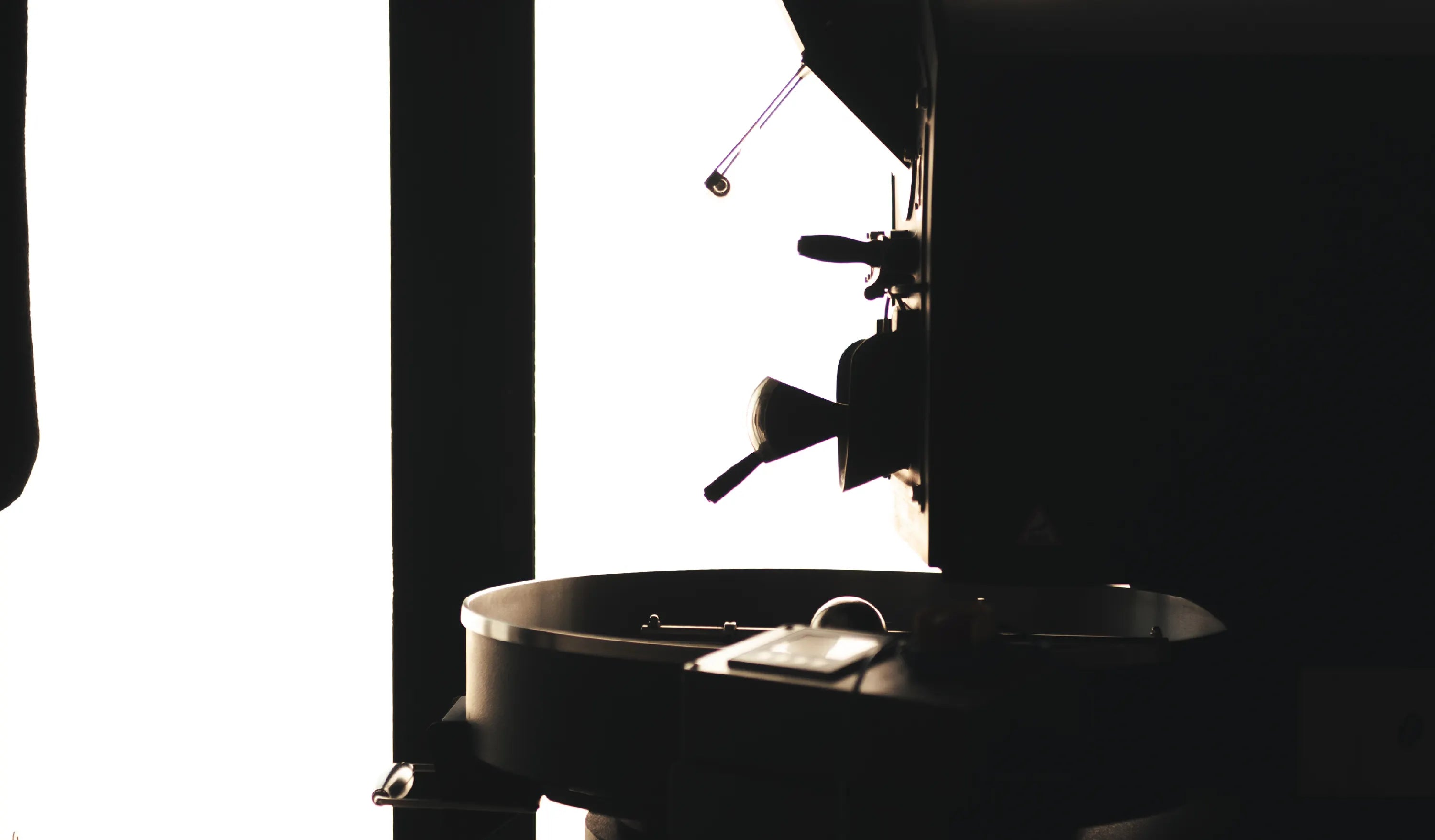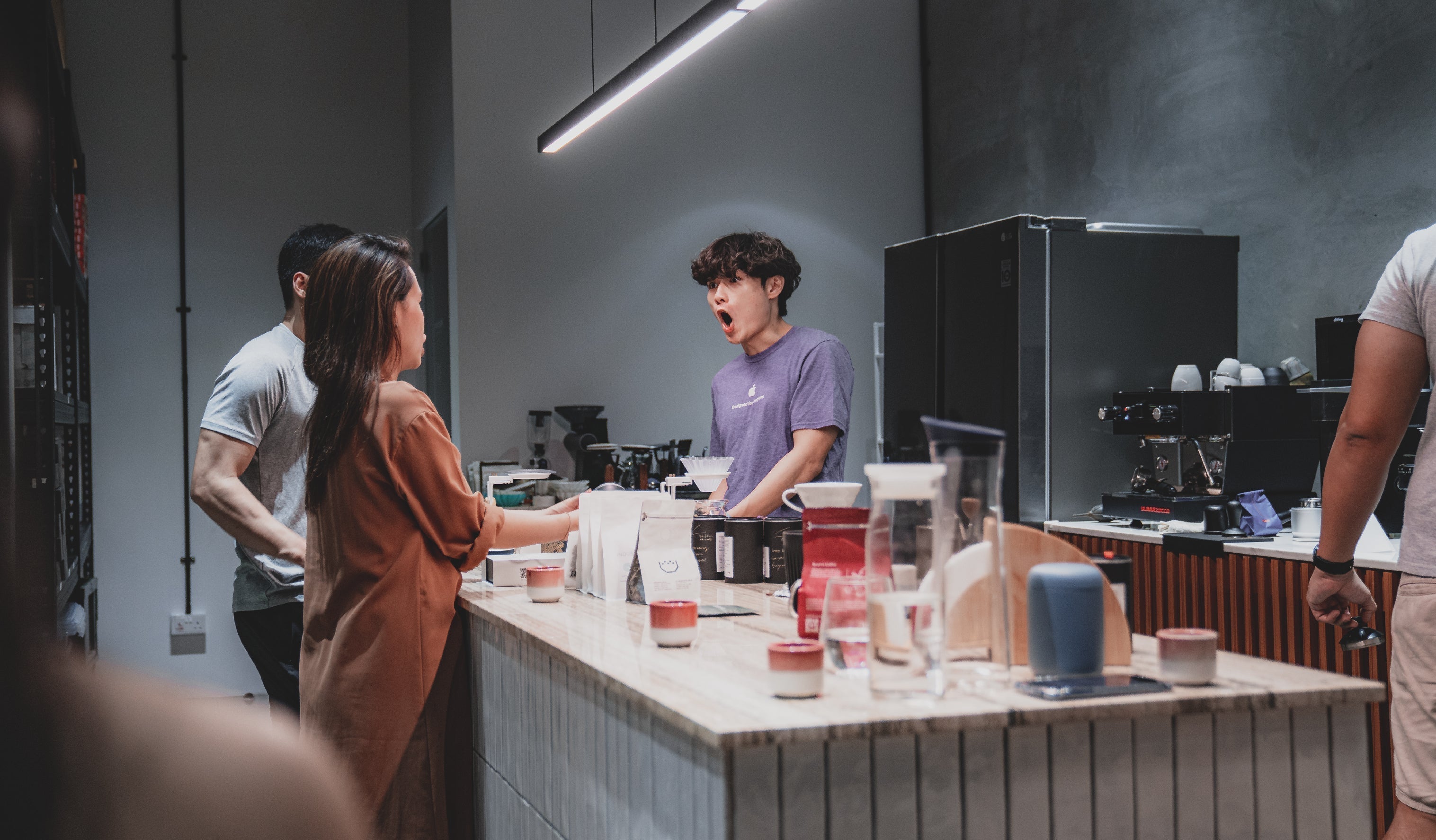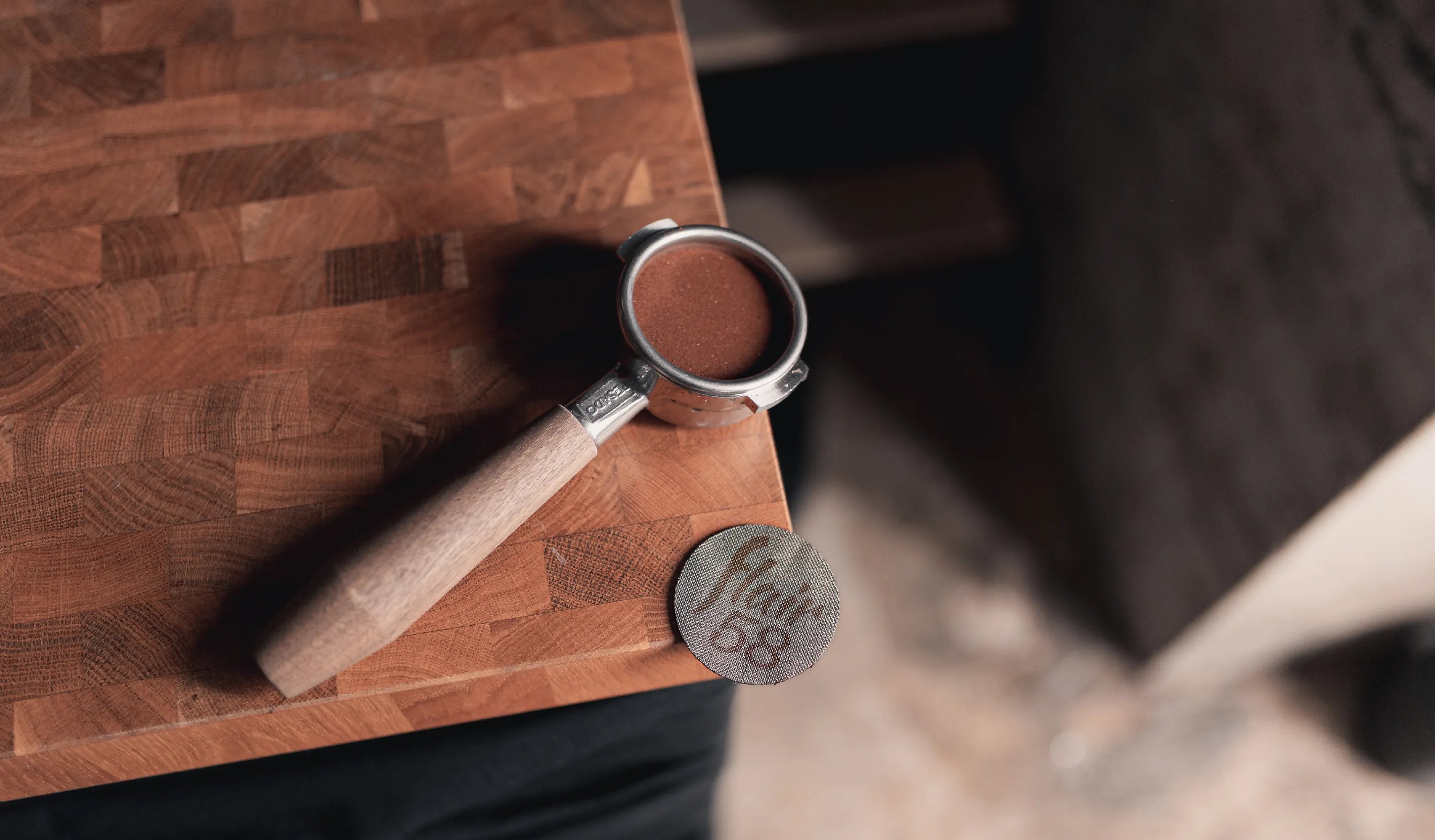An introduction to the theory of coffee extraction begins with the Specialty Coffee Association (SCA) Coffee Brewing Control Chart.
Grounded in principles introduced by Dr. Earnest Earl Lockhart in his 1957 paper “The Soluble Solids in Beverage Coffee as an Index to Cup Quality”, the Coffee Brewing Control Chart is directly applicable to filter coffee brewing. Yet, the theories behind the chart can also be used to understand coffee extraction in espresso making, which is complicated due to their finicky nature.
In his paper, Lockhart proposed the notion that the quality of a cup of coffee relates to the amount of coffee grounds dissolved in the liquid, now commonly known as Total Dissolved Solids (TDS). In many cases, TDS is related to the Extraction Yield (EY) of a coffee, or the fraction of compounds in coffee grounds that have moved into the liquid phase. TDS and EY are linked by Brew Ratio, which denotes the amount of water used in brewing per unit of coffee.
In totality, these three measurements form the basis of the Coffee Brewing Control Chart. Its axes are represented by TDS and EY respectively, with Brew Ratio determining the lines on the graph.
Lockhart proposed that a good tasting coffee has a relative EY of 18-22%, with a TDS of 1.15-1.35%. Within this range of values, coffees were perceived to be optimally balanced. In contrast, coffees that taste weak and diluted probably score lower on TDS measurements, while coffees that are highly intense are likely to have a high TDS. At the same time, unbalanced coffees with a profile that ends abruptly or lacks sweetness are likely to have a lower than ideal EY, and bitter, dry coffees, a higher than ideal EY.
Utilising the Coffee Brewing Control Chart to calibrate brewing a cup of coffee involves taking measurements of a coffee and adjusting brewing variables (such as grind size, pouring methods and water temperatures) to bring both the TDS and EY to the “ideal” range. Assuming a fixed Brew Ratio, these changes serve to move the coffee along the corresponding line to move it towards the target area.
Yet, while the Coffee Brewing Control Chart works as a general guide, it is not a one-size-fits-all guide.
Complex Issues with Extraction
Coffee extraction turns a little complex when the grind size used for coffee brewing ranges either too coarse, or too fine for the brewing method. At first impression, the coffee may have seemed incorrectly extracted, and a barista may have made changes to extraction without addressing the base problem of coffee grind size.
This may result in the occurrence of two different situations, which we have come to know as: Over-Under Extraction, and Under-Over Extraction.
Over-Under Extraction is when coffee grounds are coarser, and as a result brewed coffee is under extracted. However, here, in order to push extraction yields higher, you may bring EY up to a higher ratio, while finding that the intensity and flavour profile remains similarly muted, yet at the same time the coffee begins to taste bitter and dry.
This is a sign that you have extracted the surface of the same ground coffee over and over again, without being able to penetrate into the grounds and extracting the full flavour compounds in the coffee grinds, creating an imbalance in the cup – with a light, muted sweetness and a dark, bitter body. Here, it helps to grind finer and re-start the calibration process altogether to achieve a better tasting cup.
Under-Over Extraction happens when the coffee is ground too finely, and the coffee becomes over extracted. At this onset, temperature or brew ratio adjustments to bring down extraction yields without changing grind size may create a cup that is dark, with a compact flavour profile, while at the same time lacking in depth and sweetness.
This can occur due to various reasons. With finely ground coffee, the coffee brew bed is closely packed with high resistance, and water tends to find the path of least resistance through the brew bed. Sometimes, channels form in the brew bed, over extracting coffees in contact with the channel, while under extracting from the overall brew bed. Alleviating this issue involves restarting calibration with a coarser grind, and first finding a good grind size at which flavours are relatively well rounded before amending other brewing variables.
Potential Enhancements to Extraction Theory
Till this date, coffee extraction is a topic that is not understood fully by scientists and coffee professionals alike. It would only make sense for a Coffee Brewing Control Chart created in 1975 to have much room for improvement with the knowledge that exists today.
Firstly, numbers alone do not correlate to the taste journey of a cup of coffee. Simply calculating the TDS and EY of a cup does not relate it to the flavour notes found in Coffee Taster’s Flavor Wheel. However, interestingly, TDS and EY have been shown to have some impact on the taste profile of coffee – bitter intensities increase with a higher TDS and EY, sourness heightens with an increased TDS and a lower EY, and sweetness intensifies at lower TDS and EY.
Secondly, the grouping and absolute benchmarks for TDS and EY in the original Coffee Brewing Control Chart belie the incremental impact of these measurements – in short, it is unreasonable to say that a coffee with an EY of 17.9% will be vastly different from one that is 18.0%.
Putting these two together, Prof. Ristenpart of UC Davis presented in his lecture a Proposed Version of the Coffee Brewing Control Chart, one which showed the sensory attributes that were maximised at the various combinations of TDS and EY.
Building on these studies, the SCA has also released a write-up, Towards a New Brewing Chart, that details their journey to expanding and updating the Coffee Brewing Control Chart. Highly complex, and still in the process of research, it is studying the individual impact of every single sensory attribute in relation to TDS and EY.
Where this all ends up remains to be seen, but in the meantime, a good grasp of the original Coffee Brewing Control Chart, as well as an understanding of the potential complex issues that may arise from coffee extraction, can continue to remain as a solid reference point to calibrate coffees with proper extraction!
Journal Archive

Milk in World Barista Competitions
An overview of milk concentration methods in coffee competition, focusing on freezing techniques that enhance milk's qualities for great coffee beverages.

How Coffee Cup Colours Affect Your Drinking Experience
Cross-modal perception of colours on the taste of coffee

Learning to enjoy more

Same Coffees Everywhere, All at Once
Why do local specialty coffee shops serve the same coffees?

A study of unexpected coffee production nations

A low down on using puck screens for espresso machines


